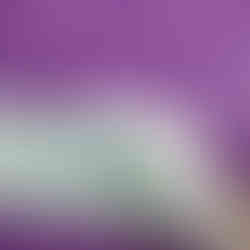Your Binding Basics
- prarthanadickson

- Aug 30, 2022
- 3 min read
When I began my quilting journey, binding was one aspect I was most unsure about. In my mind, I focused on the functionality of the binding - all it needs to do is seal in the raw edges of the quilt so fabric doesn't unravel; but as every quilter will tell you, your binding also needs to be super strong to withstand the wear and tear of multple washes in between usage.

This also means that your binding can vary based on what quilted project you're working on. For example, if your quilt or quilted project is mostly decorative, you don't need it to be particularly strong.
In this post I cover my favourite type of binding -
the double fold binding. This not only withstands wear and tear well it's also rather simple and straightforward. You can machine sew, hand sew, or use a combination of the two for sewing on your binding.
Prepping the binding
Trim away excess batting and binding from your quilted project.

Next, measure all four sides (i.e. the perimeter) of your quilted project. Add 12" to this number - if you only have 10" of extra fabric, that should be fine as well.

Divide that number by 42" (or the width from selvedge to selvedge of the fabric you would like to use). This is how many width of fabric or WOF strips you will need.
Cut the necessary strips measuring 2.5" by WOF.
Lay [2] 2.5” by WOF strips together edge-to-edge diagonally. Draw a line from corner to corner as shown below. Pin and sew long that line.
Flip over to make sure everything is aligned, then trim a 1/4" away from the sewing line. Flip open again and press.
Sew the rest of the strips together this way. When you're done, press the strips in half lengthwise (i.e., the width is now 1.25" folded, instead of 2.5")
And you're binding is ready to be sewn on to your quilt or quilted project.
Adding binding to your quilt or quilted project
Take one of the longest sides of your quilt. About half-way done your quilt edge, lay your binding on top of the right side of your quilt, raw edges together. Leave about 10" free and the sew the binding onto the quilt with a 1/4" margin. If you're working on a smaller quilted project (like cushion covers, placemats, etc.), then leaving 10" may not be possible. Just make sure you leave at least 5" free.

When you get to a corner sew right up to the end and cut the thread. Then, flip the binding out to the right and fold back over onto the next side. This will leave a small triangular flap.
Continue sewing around the quilt or quilted project. When you get to the place when you started the binding, stop sewing about 20" from your starting point. If you can't leave 20", then leave as much of a gap as you can.
Lay the strips flat over each other so they overlap. Mark 2.5" of overlap - be as precise as you can be! Trim away excess binding.
Join the edges of the binding using the same diagonal seam.
The more of a gap you have, the easier this process will be! When it's sewn together, lay your quilt or quilted project flat along that edge. If you've sewn your diagonal seam correctly, your binding should now lay flat along that edge with no bulges. If everything is satisfactory, trim a 1/4" away from sewn line and press. Finish sewing your binding onto your quilt or quilted project.
Turn your binding over the raw edge and hand sew it to the back of your quilt or quilted project. You can use decorative stitches, an invisible hem stitch or big stitch (like hand quilting stitches) to sew your binding. I tend to prefer the invisible hem stitch.
If you would like to machine sew your binding, then pin or clip your binding to the back (from the front), stitch in the ditch of the binding from the top. It can be quite tricky to do this, and after several failed attempts (with lots of seam ripping), I went back to hand sewing the binding to the back.
Alternatively, you can machine sew the binding to the back of the quilt or quilted project at the start, then top stitch the binding to the front of the quilt. This is a MUCH neater alternative if you don't want to hand sew or have a very large quilted project to finish.
And there you have it! Enjoy your finished quilted project and share some photos online. If you liked this post, make sure you share and subscribe!
You can find me on Instagram @cecesquiltsandthings















































Comments